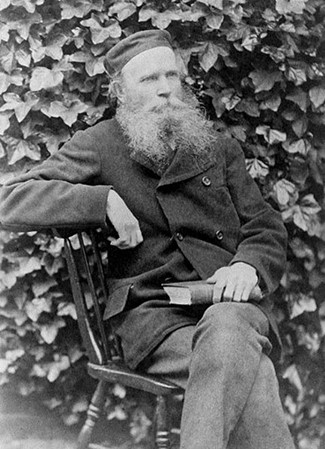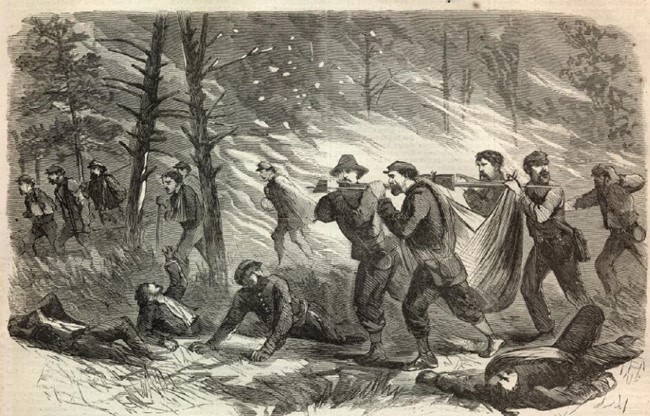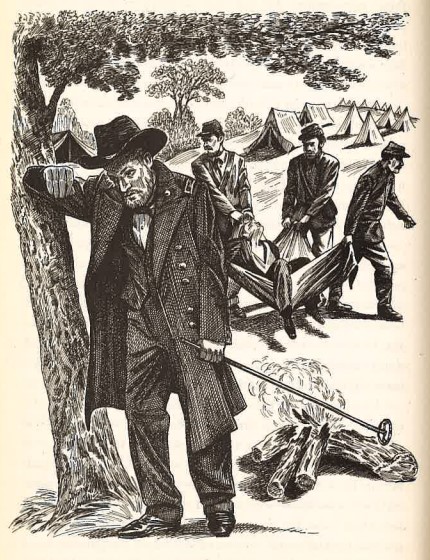Table of Contents
The Oxford English Dictionary is one of the most complete pieces of text that includes origins and definitions of every word in the English lexicon. Its first edition was published between 1884 and 1928. In the 1870s, a Dr. James Murray took over as editor of the dictionary and began accepting entries for the dictionary from all over. For the next 20 years, Dr. Murray would receive over 10,000 of these entries from a mysterious Dr. W. C. Minor from the village of Crowthorne in Berkshire, England. In 1891, Dr. Murray went to visit Dr. Minor where he learned the truth about the man; he had been in Broadmoor Criminal Lunatic Asylum, not as a member of the staff or as a physician, but as a patient.

William Chester Minor was born in 1834 in Ceylon, now Sri Lanka, to New England missionaries Eastman Strong Minor and Lucy Minor. After the death of his mother, William and his father began a missionary tour around the Southeast Pacific. Settling in Manepay, William began his education at the mission school where his stepmother taught, and he was able to learn Singhalese, Burmese, Hindi, Tamil, and understand several Chinese dialects. He was sent to New Haven, Connecticut, when he was 14 to live with family.[1]
William Minor graduated from Yale School of Medicine in 1863, before joining the Union army as a surgeon just two days before the Battle of Gettysburg began. The following year in May, Dr. Minor was with the Union army during the Battle of the Wilderness. The battle was one of the earliest major engagements during General Ulysses Grant’s Overland Campaign. Taking part in a dense forest area near Spotsylvania and Orange Counties in Virginia, it would become one of the most horrific scenes of the Civil War.

The incredibly dense, 70-square mile forest was flooded with over 160,000 soldiers from both armies. The sheer volume of musket fire eventually led to what began as a small forest fire, which rapidly turned into a raging inferno, burning alive the wounded still on the field. The battle resulted in 30,000 casualties from both sides,[2] with multiple accounts of the horrors seen as a result of the fire. During the battle, desertion became more common than it had been before. Punishment for desertion varied, but one method was for the surgeon to brand the soldiers with a “D.” Minor was tasked with performing this barbaric act on an Irish soldier found to have deserted.[3]

Dr. William Minor witnessed the carnage which left a deep mental scar that would haunt him for the remainder of his days. Minor would remain in the Army until 1868, when he was committed to the Government Hospital for the Insane in Washington D.C. Originally built in 1852, it would later become known as St. Elizabeth’s, and was operated with a greater understanding of mental illness than previous institutions. Designed by Dorothea Dix and Dr. Charles H. Nichols, St. Elizabeth’s included individual rooms for patients, with views of nature, fresh drinking water, and nearby farms providing fresh food and jobs for the patients. During the Civil War however, the hospital would become overcrowded, and more buildings had to be constructed.[4] Dr. Minor stayed at St. Elizabeth’s for about 18 months before going to England in 1871.
In February of 1871, while walking down the street, George Merrit was fatally gunned down by Dr. Minor. In a fit of delusion, Dr. Minor mistakenly believed that Mr. Merrit had broken into the room he was staying at in a London slum. Later that April, Dr. Minor was pronounced not guilty on account of insanity and sent to Broadmoor Criminal Lunatic Asylum. While committed to Broadmoor, Dr. Minor was given two connected rooms and was able to use his Army pension to purchase a wide variety of books to occupy the time.[5]
Shortly after his arrival to Broadmoor, Dr. Minor heard that Oxford was looking for submissions of definitions and examples of English words to compile in a complete dictionary. Dr. Minor began to use his vast personal library to enter submissions to the Oxford English Dictionary. The sheer number of submissions attracted the attention of the dictionary’s editor at the time, Dr. James Murray. Curious about the mysterious contributor, Dr. Murray set out to find the person behind the submissions.
In October of 1897, major contributors, professors, and members of London’s Philological and literary societies convened for a banquet at Queen’s College to honor both Queen Victoria and the release of their volume comprised entirely of the entry “C.”[6] Dr. James Murray began thanking those who attended and contributed to the dictionary, but one name, and the largest contributor, was not present at the ceremony. Dr. W. C. Minor was nowhere to be found despite living about an hour away. Dr. Murray set out to find this mysterious Dr. W. C. Minor.
Dr. Murray boarded a train heading to Crowthorne where he was met by a horse-drawn carriage. He was taken to the gates of Broadmoor Asylum where Dr. Murray met the facility superintendent, mistakenly believing him to be Dr. Minor. In a brief interaction between the two, it was revealed to Dr. Murray that the mysterious Dr. Minor was in fact, a patient at the facility and had been for nearly 20 years.
In 1910, then British Home Secretary Winston Churchill, authorized the release and deportation of Dr. Minor. After a brief stay again at St. Elizabeth’s, Dr. Minor was sent to the Retreat for the Elderly Insane in Connecticut where he died of pneumonia. Dr. William Chester Minor joined the ranks of many thousands of Civil War veterans who were sent to insane asylums and seemingly cast off from society. Where Dr. Minor differs from the stereotypical snapshot of someone committed to an 19th-century asylum, is that he used the time he had to become the largest contributor to the most complete English language dictionary.
About the Author
Michael Mahr is the Education Specialist at the National Museum of Civil War Medicine. He is a graduate of Gettysburg College Class of 2022 with a degree in History and double minor in Public History and Civil War Era Studies. He was the Brian C. Pohanka intern as part of the Gettysburg College Civil War Institute for the museum in the summer of 2021.
Sources
[1] Winchester, Simon. The Professor and The Madman. New York, NY: Harper Collins, 1999. Pg 45-48.
[2] “The Wilderness.” American Battlefield Trust, n.d. https://www.battlefields.org/learn/civil-war/battles/wilderness.
[3] Winchester, Simon. The Professor and The Madman. New York, NY: Harper Collins, 1999. Pg 60.
[4] “St. Elizabeths Hospital (U.S. National Park Service).” National Parks Service, n.d. https://www.nps.gov/places/st-elizabeths-hospital.htm.
[5] Winchester, Simon. The Professor and The Madman. New York, NY: Harper Collins, 1999. Pg 120.
[6] Winchester, Simon. The Professor and The Madman. New York, NY: Harper Collins, 1999. Pg 164.


